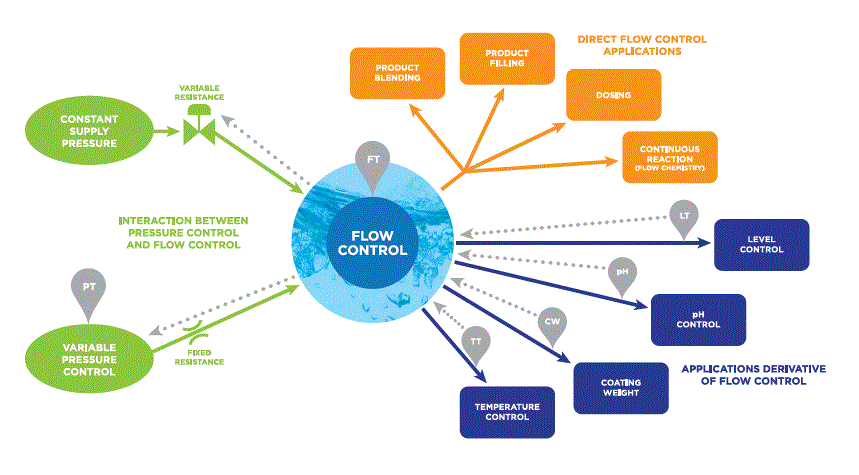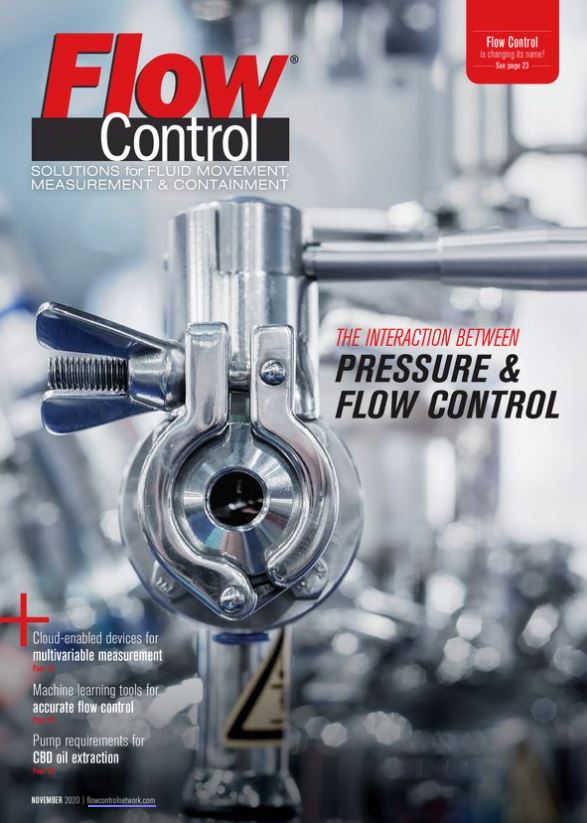Equilibar was featured on the cover of the November issue of Flow Control Magazine for the article, “Beyond the classroom: an expanded view of flow control.”
Written by Equilibar’s Jeff Jennings, the article explains how innovative developments over the past 20 years have resulted in new ways of taking advantage of the interaction between flow and pressure control. As a result, more and more process methods are emerging.
Pharmaceutical, fine chemical, agrochemical and other industries have accelerated the conversion from batch-style reaction kettles to inline blending and continuous reaction flow chemistry using precise pressure and flow control techniques. These developments have been fueled by the availability of extremely reliable and precise Coriolis flowmeters and the desire for simplified and more flexible processes.

“Working in fluid control, I’ve found that the most groundbreaking innovation tends to happen when flow and pressure converge in new and surprising ways,” Jennings noted. “As other factors evolve, even more things become possible. In the most innovative scenarios, flow control has expanded into level control, temperature control, pH control and even coating weight control.”
The article takes a close look at cascade control, which uses two feedback loops, with a primary outer control loop sending a set point signal to the secondary inner control loop. Together, they control the final process variable. Cascade control works well when the inner loop responds quickly to set point changes and is controlling a primary outer loop that is slow to respond to changes (level, temperature, pH, etc).
Cascade control loops are commonly designed so that the secondary inner loop controls flow, and the primary outer loop adjusts the flow set point to achieve desired final process variable. The advantage to this arrangement is that the inner loop will respond quickly to process upsets and send a signal to the outer loop, avoiding large excursions in the final process variable.
The article includes multiple examples and case studies that demonstrate different types of processes. Read the story on Flow Control Network and, as always, feel free to contact our application specialists to discuss your particular fluid control challenge.



